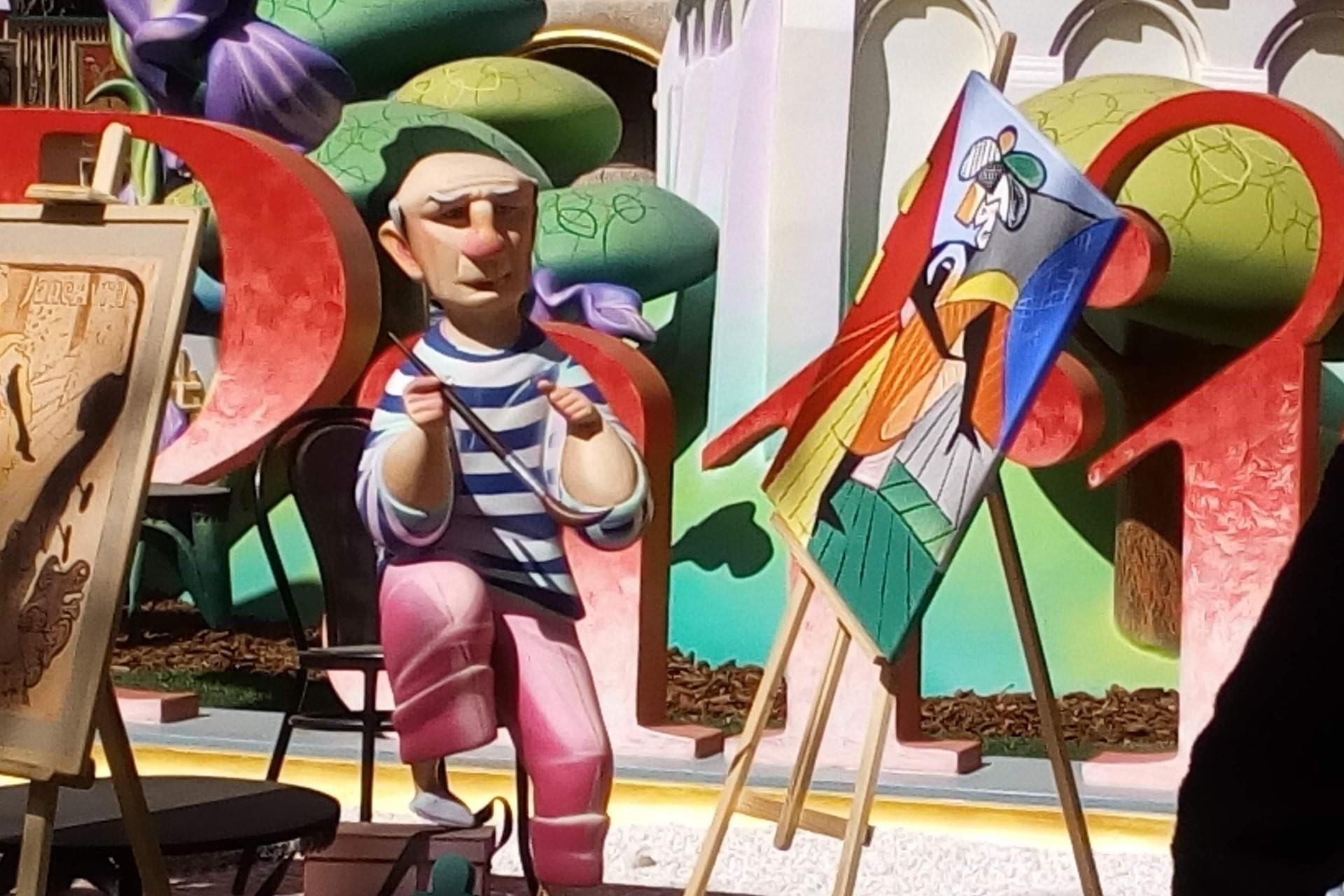Pablo Picasso’s artistic career spanned nearly eight decades, during which he explored a wide range of styles and produced close to 150,000 works, including around 13,500 paintings. A relentless innovator, Picasso played a central role in numerous art movements, often helping to define and propel them forward. His political beliefs, too, frequently surfaced in his work, adding further layers of meaning
But Picasso was also a divisive figure, not just in art, but in life. His legacy continues to provoke debate, drawing admiration, criticism, and everything in between. In this article, we’ll explore how Picasso’s art style evolved over time, tracing his many transformations through ten defining paintings.

Realism and Modernism: 1890-1901
Picasso's career started with oil paintings and the techniques and styles he was taught by his father. His first important oil painting was of his sister's First Communion (1896), which was done in an Italian Renaissance style.
In Barcelona, a young Picasso was living on his own, and even then, his works were being shown in popular artists' hangouts. One was selected for an exhibition in Paris, so he and Carles Casagemas headed to the French capital. Pablo Picasso would meet and be influenced by many famous artists while in Paris, including El Greco, Toulouse-Lautrec, and Paul Gauguin.
While Picasso had dabbled in oil paintings and an Italian Renaissance style, perhaps inspired by artists such as Renaissance master Leonardo da Vinci, he's usually more famous for his "Periods" and styles.
Famous Paintings from Picasso’s Early Days
The Old Fisherman
At this stage in his development, Picasso was immersed in portrait painting. often painting family members, himself, and models. The Old Fisherman features a model named Salmerón, who was hired by Picasso’s affluent uncle. As he continued to experiment, Picasso grew skilled in the use of brush strokes and light, while also beginning to explore more complex subjects such as religious and allegorical subjects.

Portrait of Aunt Pepa
It’s said that Aunt Pepa did not like people painting her, and she was also described as pious, lonely, and with a temper. All these factors, plus Picasso’s willingness to use more unrestrained brush strokes, came together to create a masterpiece portrait, especially for such a young artist. He captured her personality traits in both explicit (her pose and features) and implicit (a rushed portrait) ways.
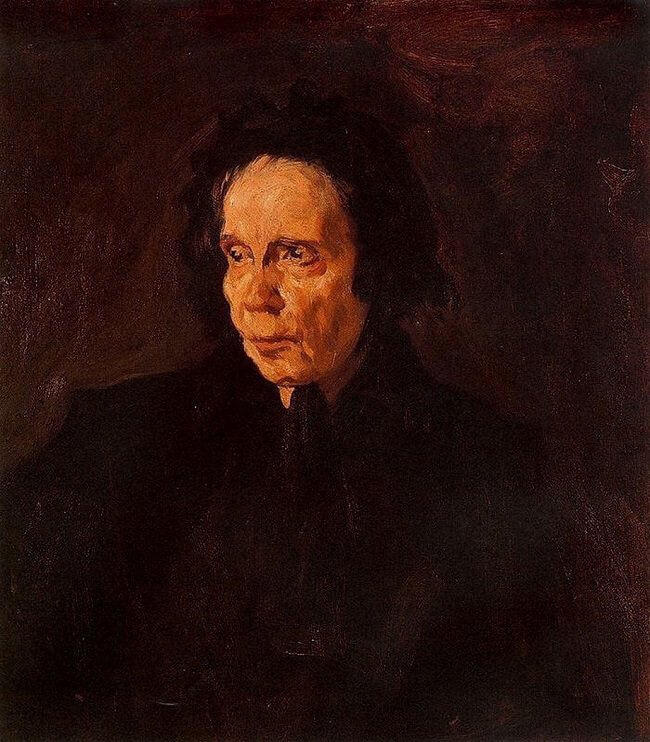
You can also see that Picasso was painting in the traditional style of Spanish portraiture with influence from the Baroque Tenebrism, the style of painting he had seen on a recent trip to the Museo Nacional del Prado. If you want to Learn more about Picasso's art and techniques, it's easy with painting classes Melbourne here on Superprof.
Picasso's Blue Period: 1901-1904
When Picasso's close friend Carles Casagemas took his own life, the devastating loss triggered a profound shift in Picasso's art that would define his Blue Period. Tragedy seemed to follow the artist, and while depression haunted many creative minds of the time — Dutch painter Vincent van Gogh among them — some of the suicides that touched Picasso's world, especially those of women close to him, were connected to his own troubled and often harmful behaviour toward others.
Picasso's works during the Blue Period take the meaning of the word both literally and figuratively, with the colour blue featuring prominently in works that also depict sad and depressing figures and subjects. The first of many of Picasso's different styles, the Blue Period conveys a sense of loneliness, dejection, quiet desperation, hopelessness, and cold brutality.
Some of Picasso's most famous works from this period include:
- The Glass of Beer (1901)
- The Soup (1902)
- Melancholy Woman (1902-1903)
- Portrait of Suzanne Bloch (1904)
These were all oil paintings, but there were also works like Motherhood that used pastels on paper. These works are influenced by El Greco, combined with the artist's own state of mind: depressed.
When Picasso was dealing with an exceptionally difficult time in his life, he became obsessed with the colour blue as a way to signify the oppressive themes of depression.
Famous Paintings from Picasso’s Blue Period
La Vie
The male figure in this painting is Picasso’s deceased friend, Carles Casagemas. The meaning behind the painting has been debated among art lovers since its completion. In general, it’s accepted that it portrays the difficulty of human life, especially relating to love between a couple versus between a mother and child.
On a technical note, you can see Picasso’s dedication to a monochromatic palette to convey his feelings of coldness, discomfort, mortality, and depression.
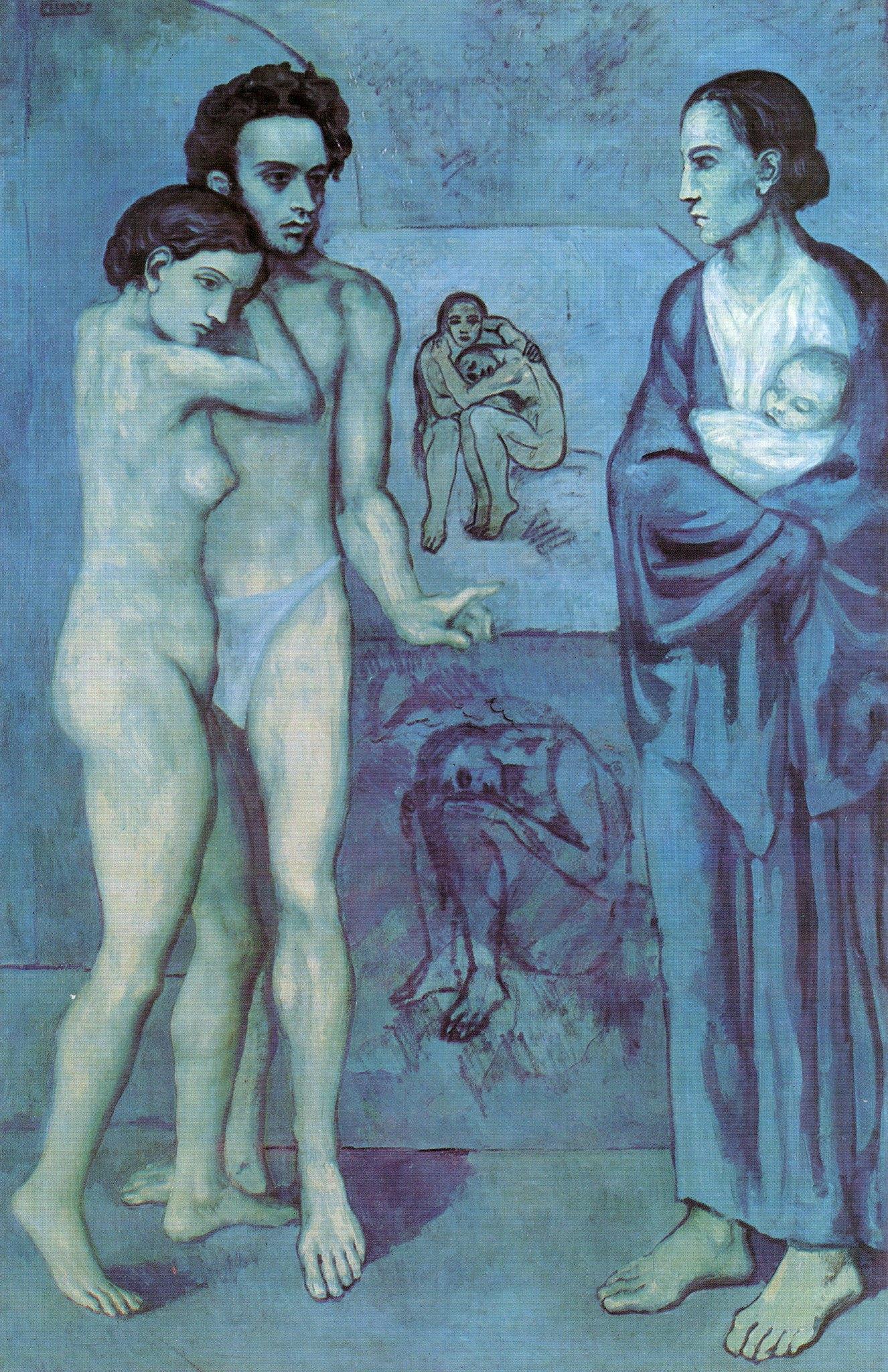
The Old Guitarist
You can already see Picasso’s proclivity for warping proportions and shapes to fit his desired composition in this early painting. The shoulders of the man are unnaturally square, and the angle of the head is exaggerated.
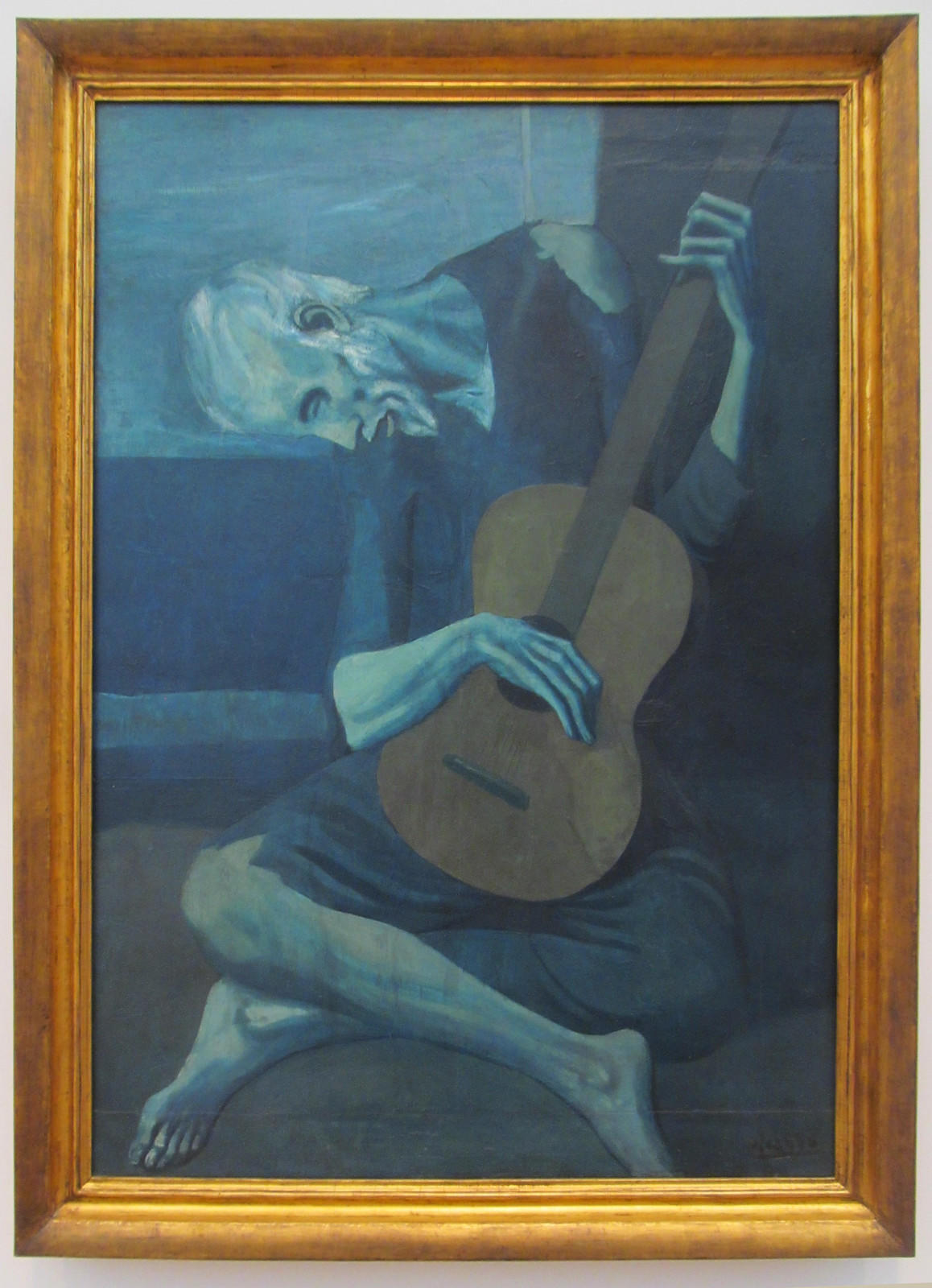
At this time, Picasso was dirt poor and struggling with that on top of all his other worries. This painting is a reflection of his life at the time: begging for money with his art, simultaneously lonely while depending on interactions with others to help earn enough to eat and live.

Picasso's Rose Period: 1904-1906
After Picasso's Blue Period came the Rose Period, which replaced the cold blues and greens with warmer reds and pinks. This period also included many nudes.
Clearly, Picasso was getting out of his depression. At this time, he also found patrons to collect his art and support him financially, easing many of his worries. He also began a relationship with Fernande Olivier, which likely warmed his heart. He also met French artist Henri Matisse, who would become his lifelong friend and rival in a healthy competition.
Some of the most famous paintings from this period include:
- Acrobat and Young Harlequin (1905)
- Garçon à la Pipe (1905)
- The Actor (1905)
Famous Paintings from Picasso’s Rose Period
Family of Saltimbanques
While Picasso’s mood was more cheery than just a few years prior, he was still exploring the theme of dejection and loneliness. He identified with the circus performers because, like them, he was also a struggling, underappreciated artist in a new city, just looking for a chance to succeed. The hollow look in everyone’s eyes and their listless, uncomfortable interactions portray the tiredness and struggle of the performing artist.
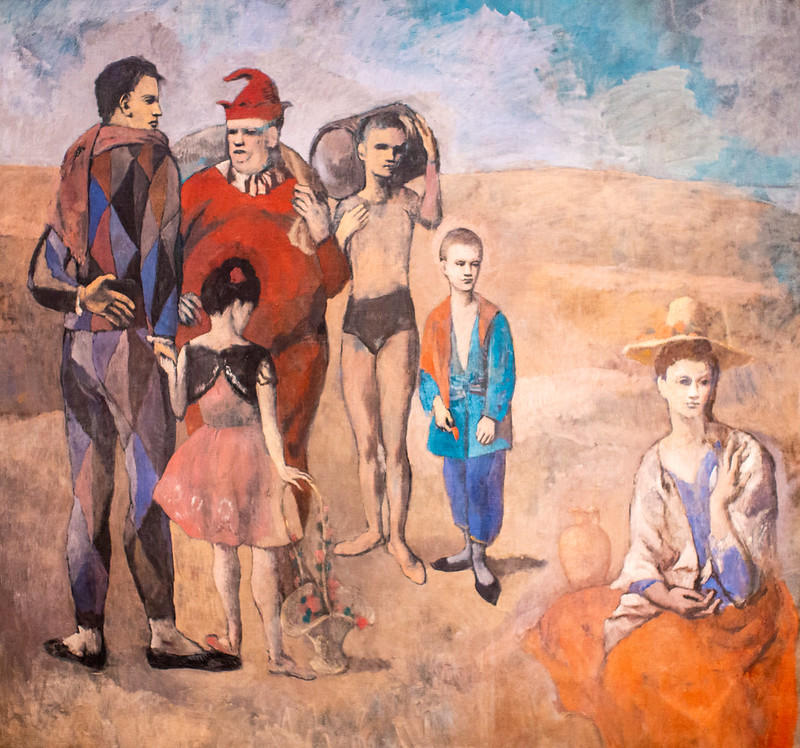
Boy with a Pipe
P’tit Louis (Little Louis), the young boy pictured here, was a regular character at Picasso’s studio. He would watch Picasso at work for much of the day and was happy to sit as a model. He is said to have died at a young age due to the harsh street life.
Picasso painted the majority of this painting before letting it “rest” for about one month. Suddenly, one night while conversing with friends, he realised how he wanted to finish up the painting. He added a crown of roses to the boy’s head. Paired with the flower pattern in the background in a wing-like shape, the boy almost looks like an ironic cherub.
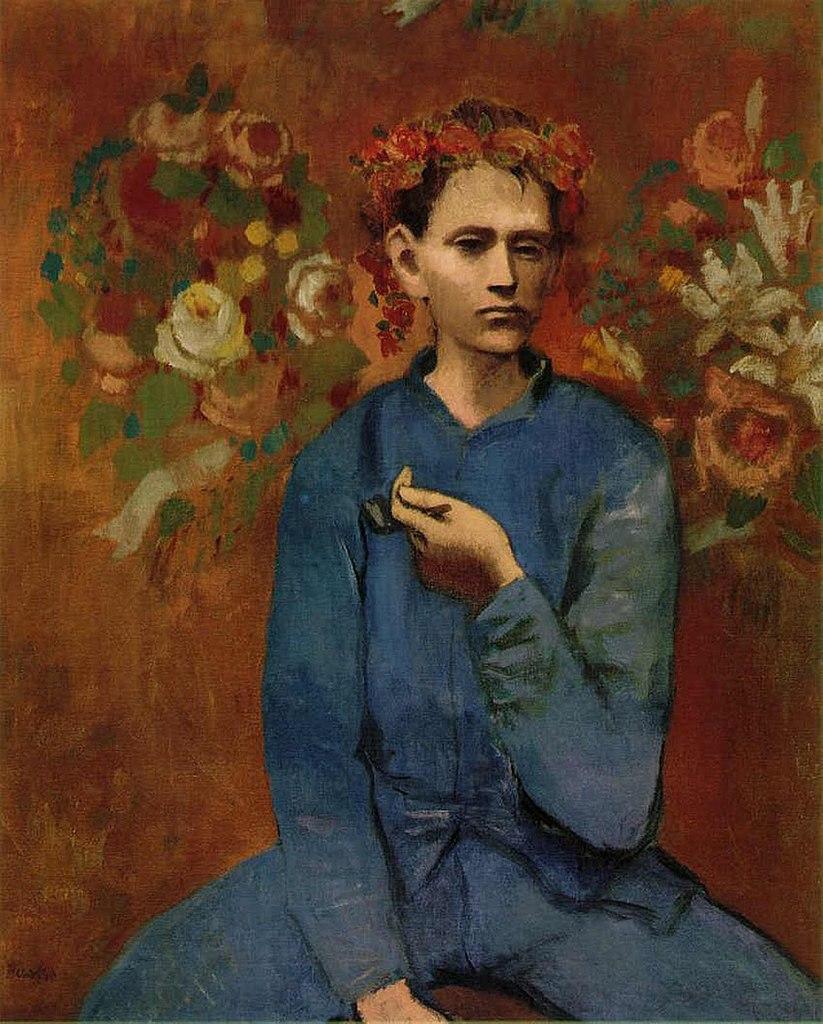
Learn about painting techniques with painting classes Sydney here on Superprof.
Picasso's African and Primitivism Period (1907-1909)
Picasso's African Period was a time when Picasso's style shifted towards works inspired by African and Tribal art from sub-Saharan Africa and the Iberian Peninsula. His famous painting Les Demoiselles d'Avignon, which features female prostitutes from a Barcelona brothel, is suspected to have used African masks as the inspiration for some of the subjects' faces.
This period and the painting itself have also been considered somewhat problematic, especially for a white European artist taking aesthetics outside of his own culture for inspiration, but others have argued that Picasso didn't copy African work but instead used it as inspiration to create a new aesthetic. However, from a modern lens, being inspired by the “primitive and savage” nature of a culture deemed less civilised has its problems.
Regardless, this period is when we start to see the distinct Picasso style art everyone can instantly recognise: Cubism.
Some of the most famous paintings from this period include:
- Nude with Raised Arms (1907)
- Nu à la serviette (1907)
- Three Women (1908)
- Head of a Woman (1909)
- Girl with a Mandolin (1912)
Famous Paintings from Picasso’s African Period
Les Demoiselles d'Avignon
By far one of the most celebrated Picasso famous paintings, this painting was met with harsh criticism in its time. However, those with open minds could recognise its genius. In addition to portraying the female form in a hugely different (and controversial) way from contemporary and historical art, it also helped establish the next big artistic movement: Cubism.
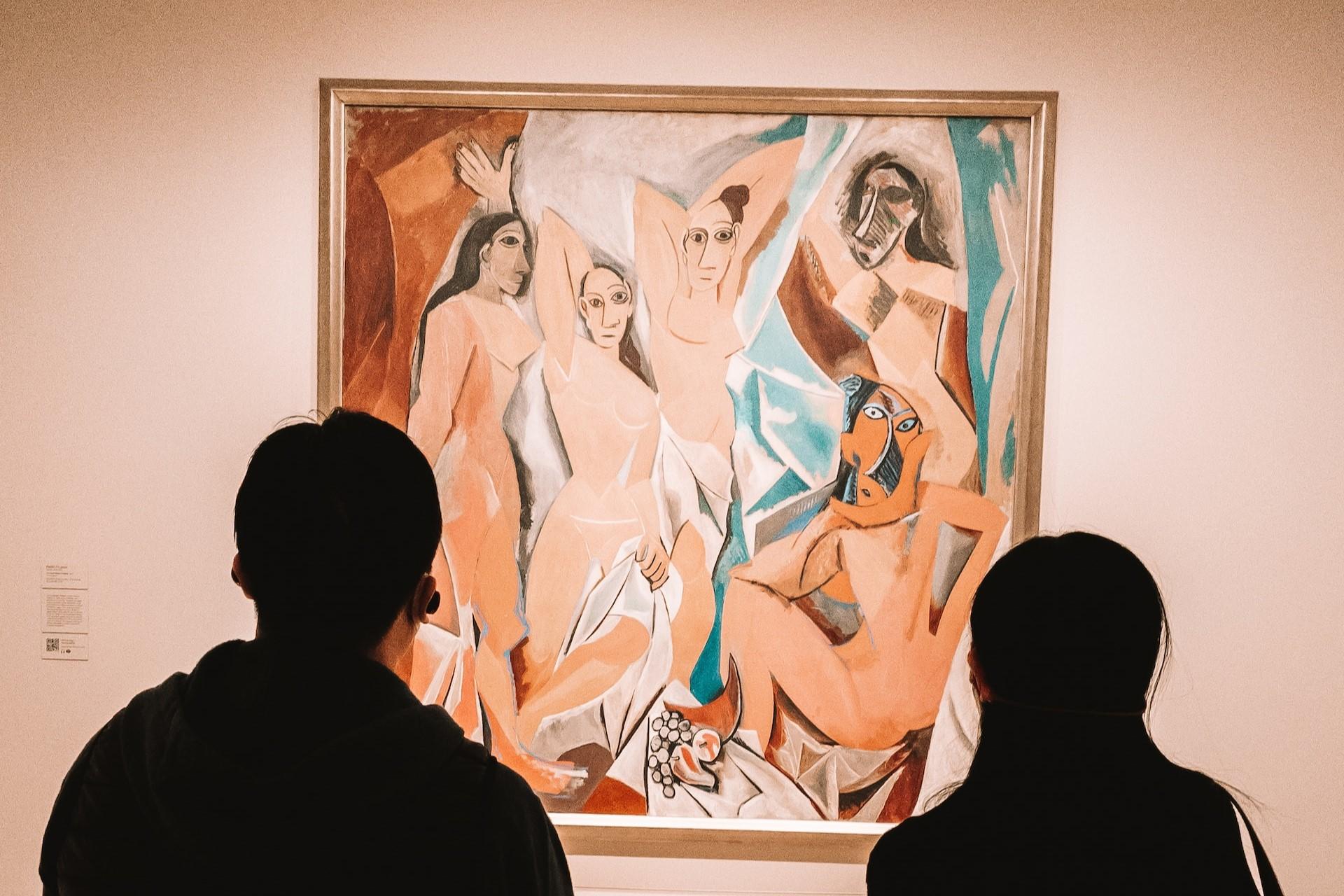
Brick Factory at Tortosa
This Proto-Cubist painting was created with the intention of making a scene that is difficult to describe. Here, Picasso plays more with form and colour to create the idea of a scene without actually depicting anything recognisable as real life.
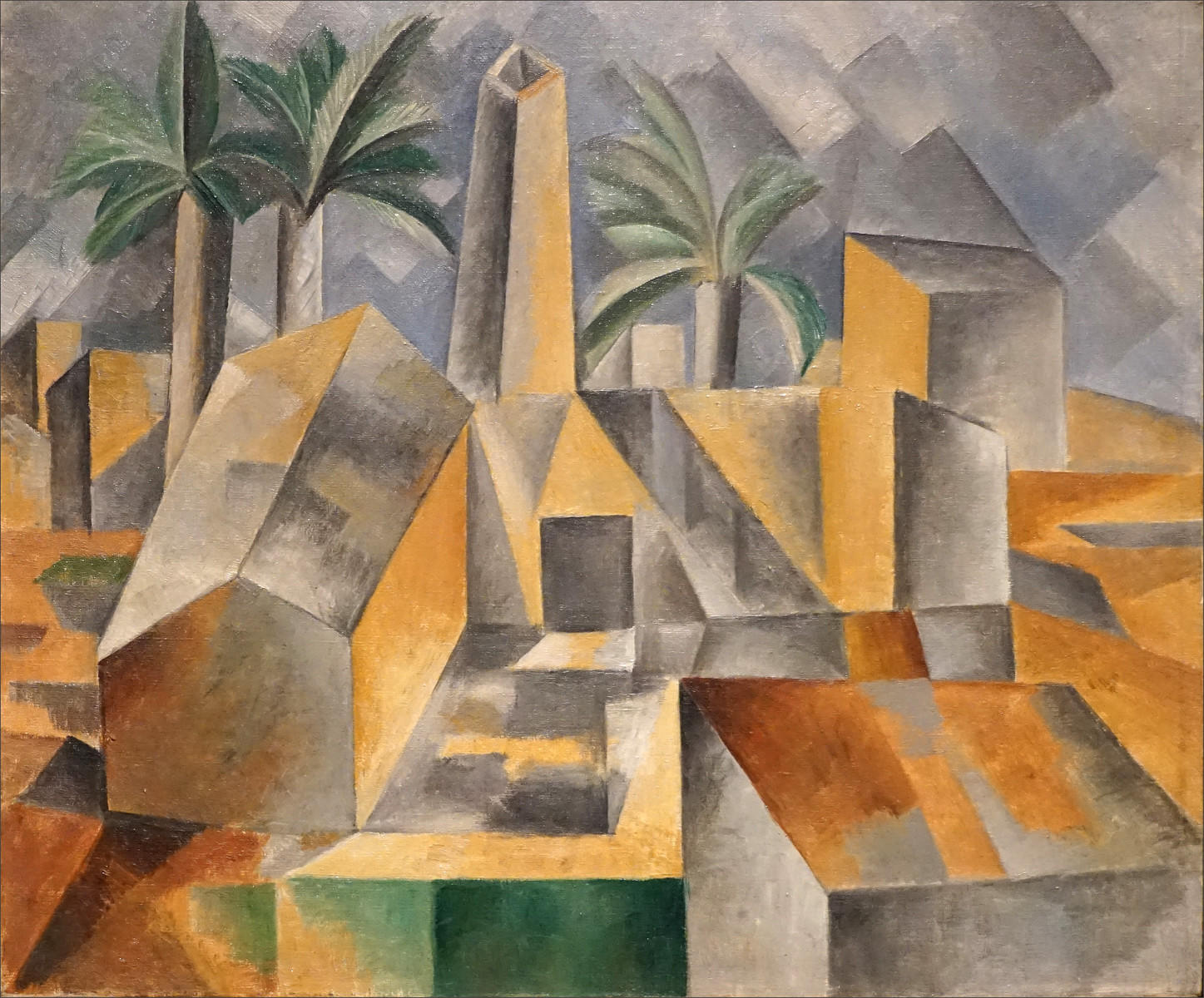
Throughout his career, Picasso helped formulate a few different art movements. He was first intrigued by Fauvism, the art movement created by Henri Matisse and André Derain. Then, Picasso and Georges Braque co-created Cubism. After that, his work was heavily influenced by Abstraction and Surrealism.
Synthetic Cubism (1912-1919), Surrealism (1919-1929), and Guernica to his Final Days (1930-1973)
Georges Braque and Pablo Picasso first crossed paths in 1907, during their time in Paris. Both artists were deeply engaged with the same avant-garde movements, drawing inspiration from Fauvism as well as African and Iberian art. While the influence of Impressionism — particularly the works of Claude Monet — can be seen in certain aspects of Cubism, the movement also drew from a range of other sources, including Futurism, Orphism, and Primitivism. Even contemporary intellectual ideas, such as the theories of Albert Einstein and Henri Bergson, played a role in shaping its development.
Cubism emerged from the collaboration between Braque and Picasso, and the two artists pushed each other to explore new styles and aesthetics. Picasso started using cut paper as collage accents in his paintings. After World War I, many painters, including Picasso, reined in their artistic style in a statement of the desire to “return to order.” In the 30s, Picasso associated with the Surrealists, who were represented by the minotaur, which you can see in many of his works from this time.
During World War II, he also continued to paint, despite threats from the occupying German troops in Paris. The rest of his life was spent having multiple affairs and treating his lovers quite horribly while fathering a few children, and of course, creating incredible art and gaining international fame. Picasso died in 1973 due to a heart attack at age 91.
Some of the most famous paintings from these periods include:
- Ma Jolie (1912)
- Figures at the Seaside (1931)
- Nude, Green Leaves and Bust (1932)
- La Rêve (1932)
- Portrait of Dora Maar (1937)
- The Charnel House (1944-1945)
Famous Paintings from These Periods
Guernica
This enormous piece was Picasso’s first foray into the world of making political statements in art. It represents the brutal attack on Guernica, a town in northern Spain, executed by Nazi German and fascist Italian troops at the behest of Spanish Nationalists. The painting went on tour, and proceeds raised from its showings were used to help Spanish war relief.
At first, it was received with mixed criticism for its composition, and some called it a weak political gesture. The original mural was sent to Spain only after its government was restructured to be freer, as stipulated by Picasso before his death.
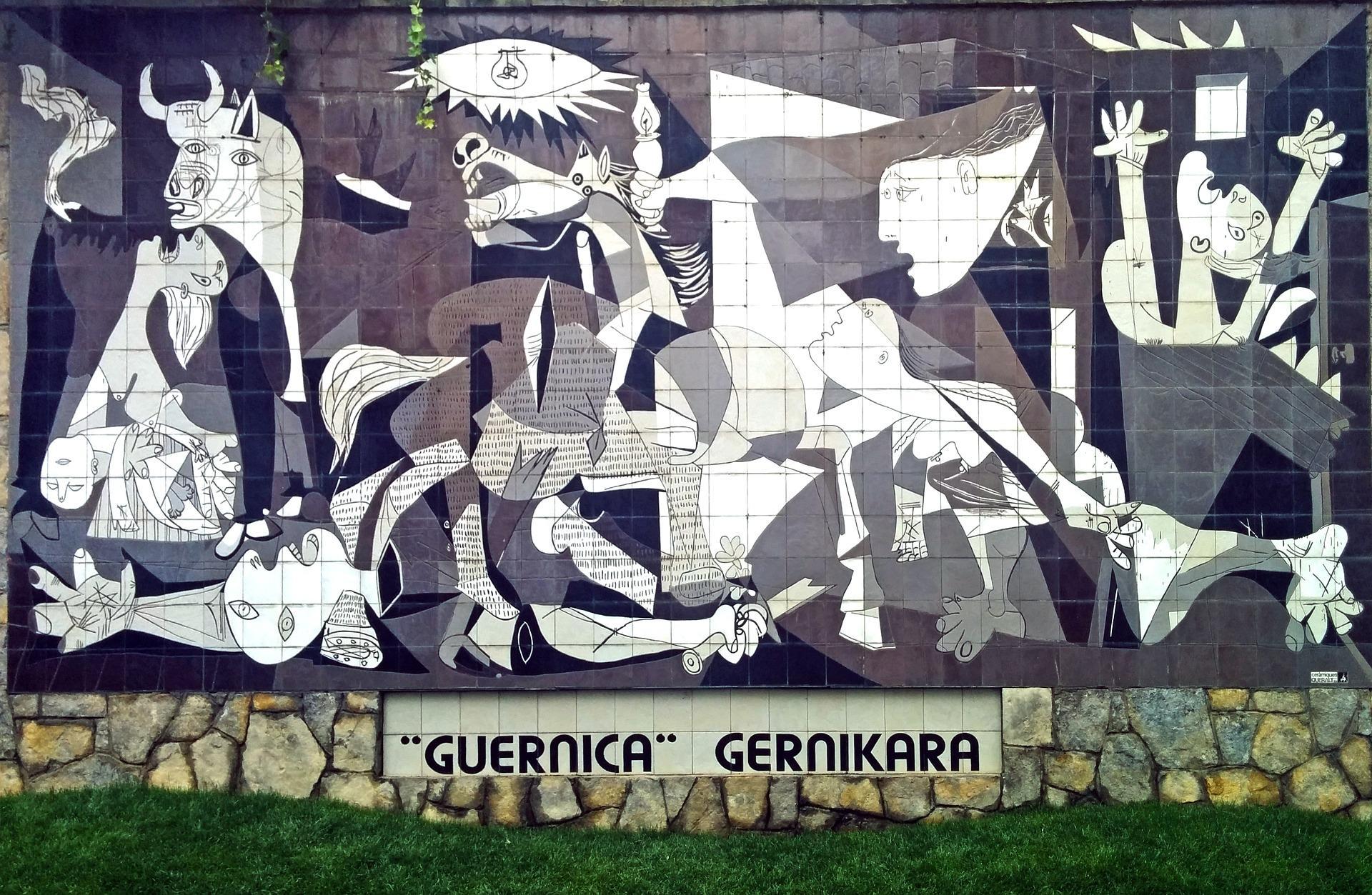
The Weeping Woman
This painting is actually part of a four-painting series, all depicting a woman crying. The subject is Dora Maar, Picasso’s lover, and she is sobbing into a handkerchief. It was another exploratory aspect of the effects of the attack on Guernica since Picasso painted these images to portray deep emotional pain, grief, and sadness happening in real-time from this real-life event.
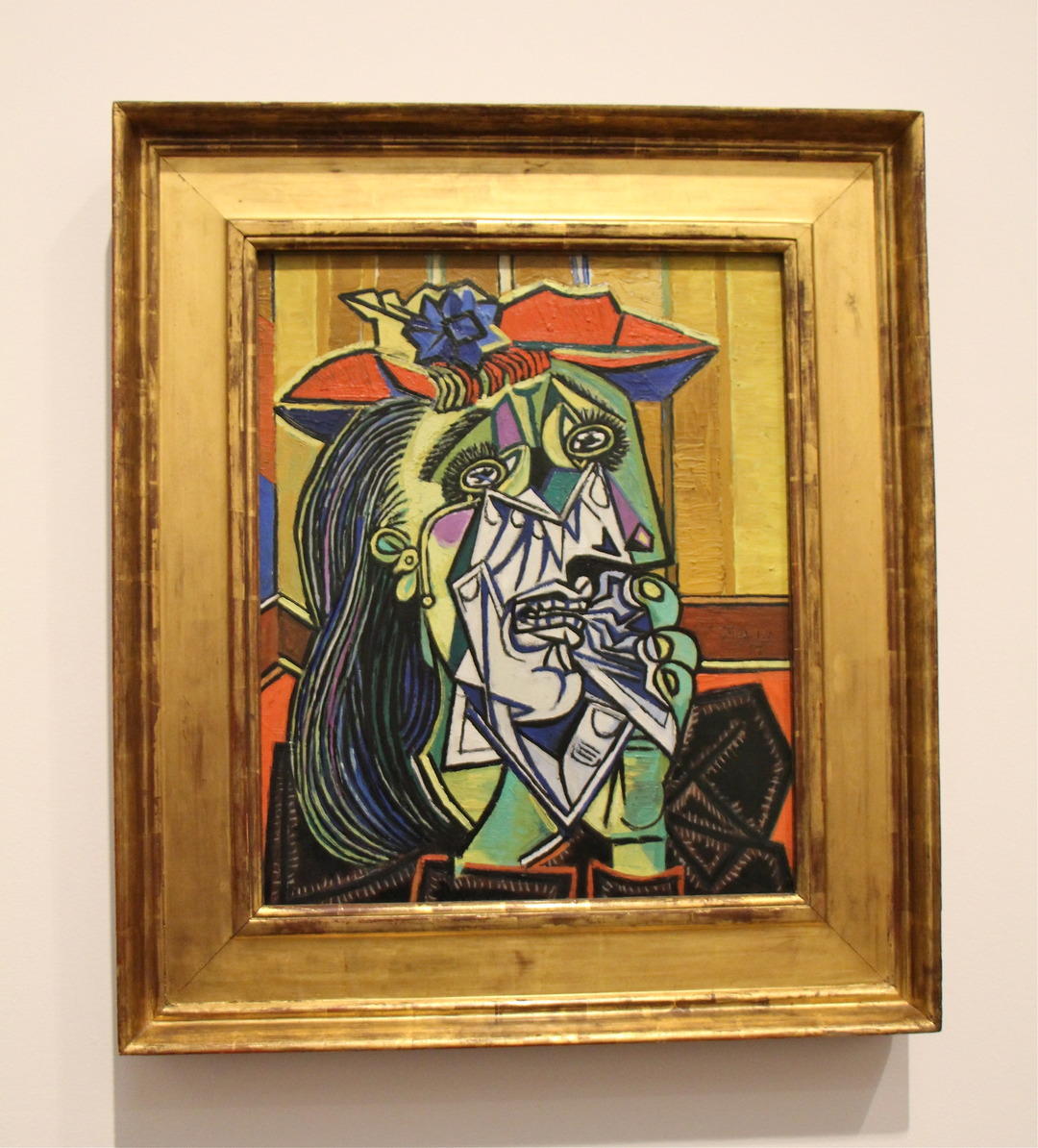
Discover Brisbane painting classes and learn about artistic techniques like Picasso here on Superprof.
Picasso's artistic journey is marked by distinct periods of creation, unlike many artists who evolve gradually. While most experiment with techniques and concepts, Picasso's shifts between styles are more pronounced and clear-cut, making his artistic transitions notably stark compared to others.
Understanding Picasso: The Man Behind the Masterpieces
Early Life
Pablo Picasso was born in Málaga, Spain, on 25 October 1881, to Don José Ruiz y Blasco and María Picasso y López. His father, himself an artist, worked as an art teacher and museum curator. Pablo demonstrated exceptional artistic talent from an early age—reportedly, "pencil" was his first word.
The family relocated to A Coruña, where Picasso's abilities flourished under his father's tutelage. Following the tragic death of his sister Conchita in 1895, they moved to Barcelona, where Picasso enrolled at the School of Fine Arts at the age of 13.
In Barcelona, he befriended the artist Carles Casagemas and travelled extensively throughout Spain and Paris, engaging with numerous contemporary artists. He drew profound inspiration from the work of Paul Cézanne, whom he famously described as "the father of us all," referring to his generation of contemporary artists.
The Man Behind the Art
Having explored Picasso's artistic evolution through his most significant works, it's worth considering the man who created them. Pablo Picasso, whilst undoubtedly one of history's most revolutionary artists, had a troubled personal life that many believe influenced his creative output.
Multiple accounts describe him as difficult in his relationships, particularly with women. Biographers document instances of violent and controlling behaviour, as well as patterns of emotional manipulation in his romantic relationships. His children, including Paloma and Claude, have spoken publicly about their troubled relationships with their father.
Some argue that personal conduct should be considered separately from artistic achievement, whilst others believe understanding the artist's psychology helps interpret their work.
Why might these details matter when viewing his art?
Artists' personal experiences often influence their creative work. Understanding Picasso's life can provide valuable context for interpreting the themes and styles we've seen across his different periods.

